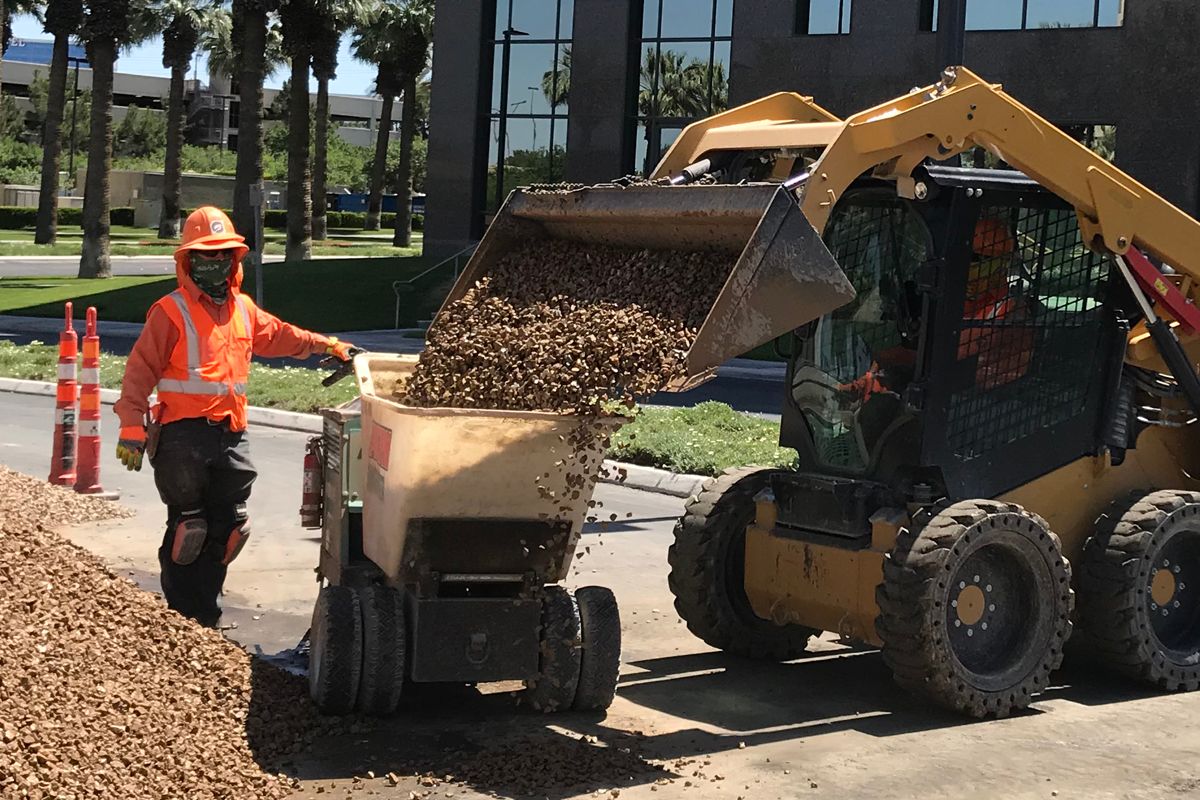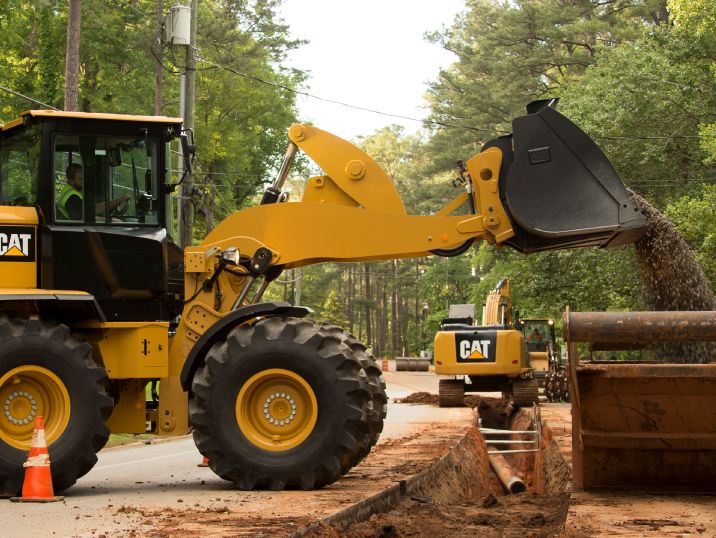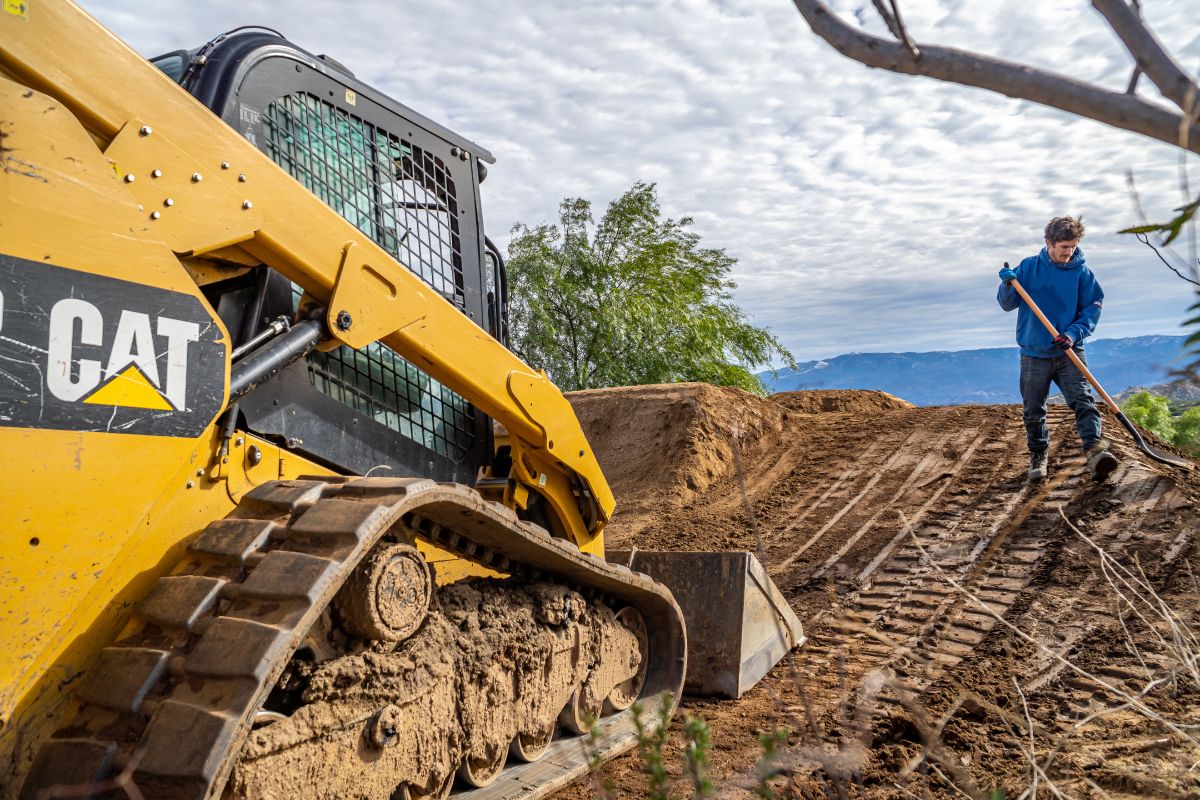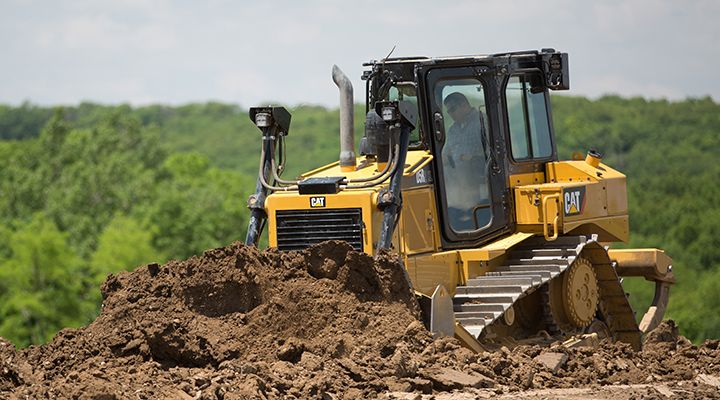

Sign In
Welcome! Sign In to personalize your Cat.com experience
If you already have an existing account with another Cat App, you can use the same account to sign in here
Register Now
One Account. All of Cat.
Your Caterpillar account is the single account you use to log in to select services and applications we offer. Shop for parts and machines online, manage your fleet, go mobile, and more.
Account Information
Site Settings
Security
Your Guide to Landscape Construction
Landscape construction on commercial sites takes a different approach than your typical residential landscaping job. Caterpillar customer Bill Benoit of LandCare shares his advice for how to do it successfully.
John Janes | Landscaping Marketing Manager
Adding landscape construction to your business offerings can be a big step up for your landscaping company but needs careful planning and attention to detail to keep those customers coming. Bill Benoit of LandCare is no stranger to the industry, having been involved since the ‘80s when he was still in high school, and we asked him to share his knowledge about how to make your landscape construction projects a success.
Start with Design
The first step in any landscape construction project is the design phase. Bill and his team prefer to be brought in as early as possible in the design process. This helps them understand exposure, drainage and the intent of the building, which also means they can address any of these elements up front and avoid costly changes down the road.
Prepping for a New Landscape Construction Job
Since timelines are ever changing, each new landscape construction project calls for a good grasp of logistics, scheduling and who the other contractors are on-site.
“We make regular site visits during each job so we can make sure we’re not running into any inefficiencies or overruns,” says Bill.
They also use this time to prep their supplies. They get any plants or other materials they'll need well in advance of the project start date but don’t have them delivered until just prior to starting. Making sure their equipment is in working order and ready to use is another key step.
“Compact equipment is our bread and butter, particularly compact track loaders,” Bill notes. “We have one at every branch and use them with attachments like graders, tillers and augers, among others. We like to supplement our equipment with rentals, so we’ll bring in backhoe loaders and wheel loaders for larger projects.”
And finally, one of the most important parts of the prepping process is ensuring that your estimating, sales and production teams have coordinated to convey assumptions, client expectations and commitments.

How Commercial Landscape Construction Differs from Residential Projects
Commercial landscape construction has some pretty big differences from residential projects, the most obvious being the scale of the work. While residential customers might place more value on a good experience working with a particular landscape company, commercial clients are focused on efficient timelines and meeting budgets. The working process itself is different, too.
“With a commercial project, we’re usually working with a site superintendent who is overseeing the project and directing all the subcontractors,” says Bill. “The design and vision were developed for the property years in advance. On a residential site, we’re working with the homeowner and a landscape designer to bring the vision to life in a collaborative effort.”
This difference in process makes the prep stage all that much more important for commercial landscape construction jobs, and means you need someone on the team with the skills to take that on.
How to Get Started with Landscape Construction
If you’re looking to expand your current landscaping offerings to include landscape construction on commercial sites, Bill notes a few different things you should keep in mind:
- Consider your equipment — If you are just getting started with commercial work, you may not have all the equipment in your fleet that a particular job needs. You can either supplement your existing fleet with rental equipment until you know you have the work to support buying the machine or buy outright if it’s a machine you’ll need to use heavily on the job.
- Make connections — Forming connections with commercial general contractors who fit your business, whether that’s by reaching out to them directly or getting in touch with other landscape architecture and engineering firms for introductions, is a good way to help your future projects succeed.
- Understand permits — Contacting permitting agencies can help you learn when construction permits are issued and which companies requested them.
- Find new projects — Subscribing to services like The Blue Book Network, where many construction companies post their projects and plans and are looking for pricing, can help you find new work.
- Be prepared for cashflow changes — Typically, commercial work is performed at lower gross margins than residential. Payment cycles can be longer, too. Once a payment requisition is submitted, and if there are no discrepancies, then you usually operate under 30-day payment terms.
“Commercial landscaping work is a big undertaking,” Bill advises. “But if you have the right personality for the work, it can make all the difference!”



John Janes
Landscaping Marketing Manager
John Janes has been bringing his diversified expertise to sales and marketing initiatives at Caterpillar for more than a decade. Not only does he hold an LIC certification from the National Association of Landscape Professionals (NALP), CSP and ASM certifications from the Snow & Ice Management Association (SIMA), but Janes also serves as an American Concrete Institute (ACI)-certified concrete flatwork technician.

RELATED ARTICLES
You’re here to get ideas to grow your business. Read on for machine insights and expert tips and tricks to get more out of every job.
-
Bid on Jobs More Accurately
Use the technology on your small wheel loader to monitor fuel consumption and costs for more accurate job bids and greater profits.
Learn More -
Jarryd McNeil’s Guide to Building Motocross Tracks
Cat Ambassador Jarryd McNeil shares his advice on the equipment you need for building motocross tracks.
Learn More -
The Governmental Solutions 2018 Buyers’ Guide
The Governmental Solutions 2018 Buyers’ Guide is your one stop for information on Cat equipment and much more.
Learn More -
Busting the Jargon To Get You Connected
Defining technology terms to get you connected.
Learn More








